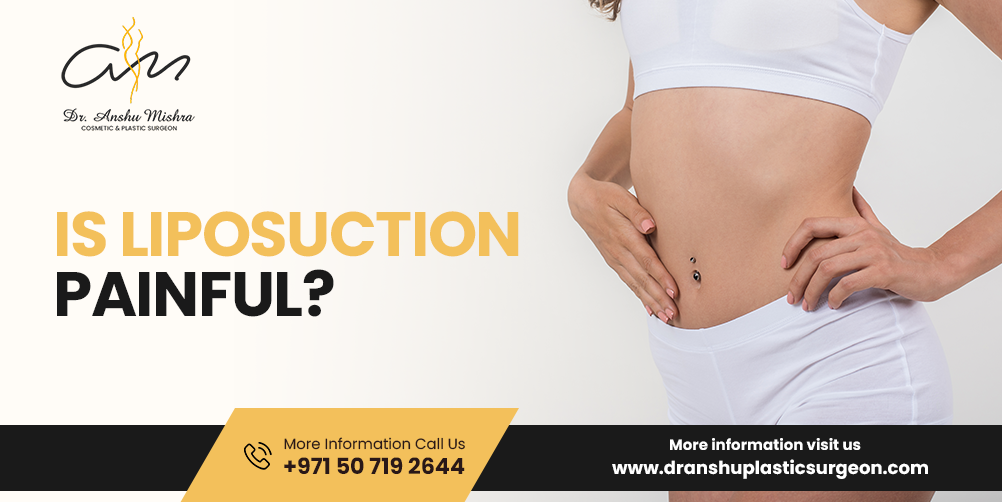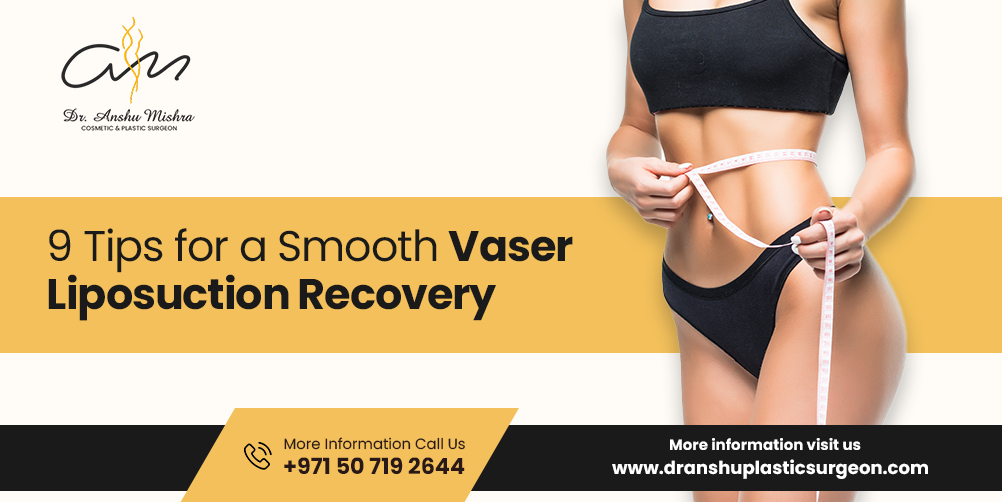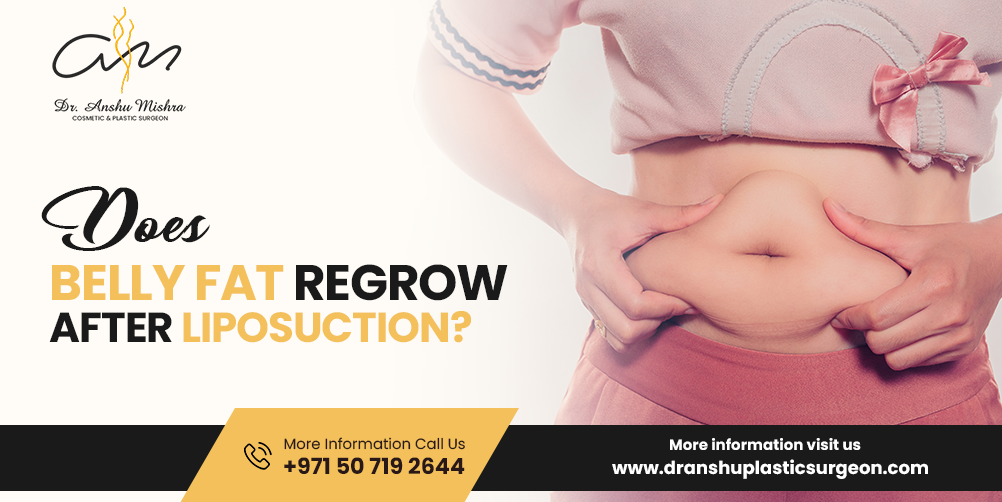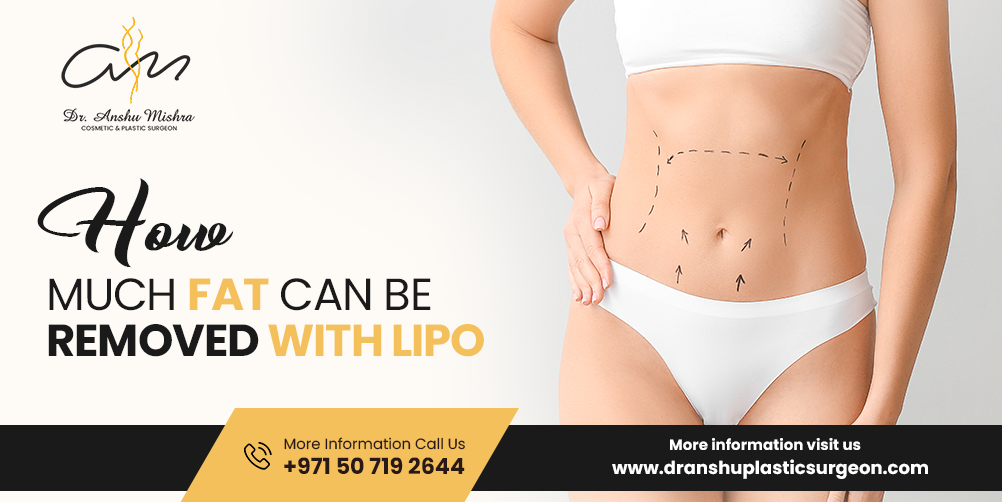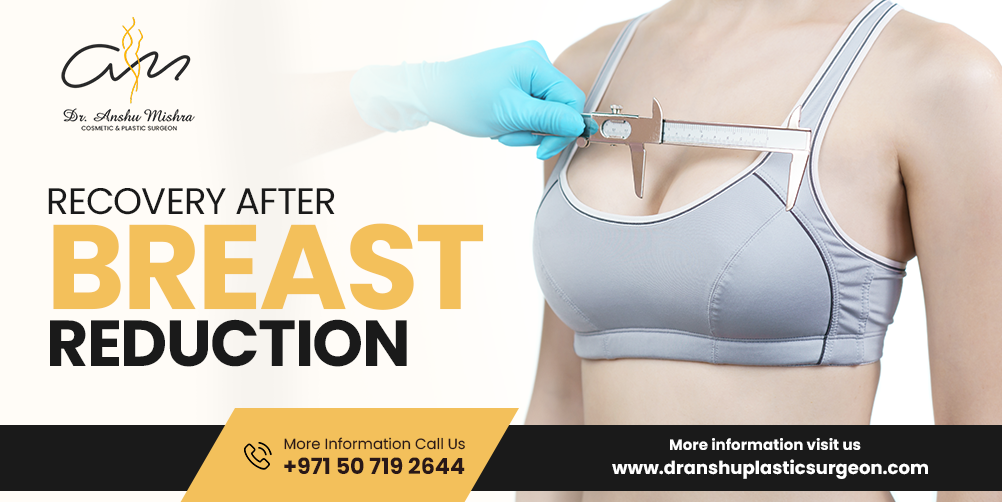Popular cosmetic surgery known as liposuction is a revolutionary way to enhance body shape by getting rid of excess fat deposits that are difficult to lose with diet and exercise alone. For anyone thinking about undergoing liposuction, one must understand that just as with any medical operation this will also be accompanied by some form of pain which will require management. Prospective patients frequently have three main worries on their minds: anticipating pain, managing it, and the healing process.
Dr Anshu Mishra, the best female plastic surgeon in Dubai explains “A person’s subjective pain threshold, the locations they choose to treat, and the liposuction procedures used can all have a big impact on how they perceive pain”. The comfort levels following and during liposuction have been greatly enhanced by modern improvements in cosmetic surgery, she adds, making it a more desirable alternative for many.
To effectively address pain issues, it is important to clarify the parts of liposuction that may cause difficulty. A key component of this technique is anaesthesia, which can be local or general based on the locations being treated and the scope of the operation. Concerns about the surgery can be greatly reduced by being aware of these possibilities and the post-operative pain management techniques.
Realistic expectations-setting is equally crucial. Even though liposuction may produce amazing body-contouring results, it’s important to understand the healing process, including the early discomfort and the progressive disappearance of pain. Not only does this information help people get ready for what’s ahead, but it also makes the process of recovering easier and more comfortable.
We aim to offer you a clear idea of what to expect in this thorough discussion of liposuction and pain issues so that you can make an informed and confident decision about having this life-enhancing treatment. Remember that your road to a refined contour is a partnership with your surgeon, based on trust, skill, and a shared dedication to reaching your aesthetic objectives, as we go more into the specifics of liposuction pain and how it is managed.
Table of Contents
ToggleThe Pain Factor of Liposuction
It is normal for prospective patients to wonder about the degree of discomfort associated with liposuction. In the case of liposuction, pain is properly controlled and minimised using contemporary methods and drugs, even if discomfort is an inherent part of any surgical procedure.
-
Understanding the Pain During Liposuction
Patients are usually under anaesthesia throughout the actual treatment, so they are pain-free. The extent of the surgery and the locations being treated determine whether the type of anaesthesia is best, local or general. Patients can stay awake and pain-free by having the targeted region numbed by local anaesthesia, which is frequently combined with sedation. In contrast, more involved treatments call for general anaesthesia, which keeps the patient entirely asleep and pain-free during the process.
-
Pain After Surgery
Patients may feel different levels of discomfort once the anaesthesia wears off. This post-operative discomfort is commonly described as pain or bruising in the treated regions, similar to the muscular aching felt after a strenuous workout. The amount of fat removed, the method employed, and the patient’s particular pain threshold all affect how uncomfortable this process is.
Factors Affecting the Perception of Pain
- Technique: The degree of discomfort may vary depending on the liposuction method used. For example, tumescent liposuction is intended to reduce discomfort and blood loss by administering a medicinal liquid into the fatty tissue before removal. On the other hand, because of the energy required to liquefy fat cells, methods such as ultrasound-assisted liposuction (UAL) or laser-assisted liposuction (LAL) may cause varying discomfort sensations.
- Treatment Area: The body may have more sensitive parts than less sensitive ones. Liposuction on the inner thighs or belly may feel more unpleasant than on the back or arms.
- Individual Pain Threshold: The perception of pain is quite personal. Feelings of pain during rehabilitation can be greatly influenced by an individual’s tolerance levels.
- Handling Expectations– Patients must have reasonable expectations about their level of discomfort. Even while liposuction isn’t seen to be an extremely unpleasant procedure—especially in light of recent developments in pain control techniques—some discomfort is typical and expected throughout the healing period. Open discussion with the surgeon about pain problems and treatment alternatives can reduce anxiety and enhance the entire experience.
Pain Following Liposuction Surgery: What to Expect
The process of obtaining the intended result from liposuction does not finish with the treatment; the healing phase is just as crucial. For a healing process to be comfortable and successful, it is essential to understand and manage post-operative pain.
-
Initial Pain Levels and the Immediate Aftereffects
As the anaesthesia wears off immediately after liposuction, individuals will experience varied degrees of pain and discomfort. Prescription painkillers that the surgeon provides are frequently used to treat patients during this early phase. This pain is usually characterised as deep bruises or soreness that is localised to the treated regions.
-
Duration of postoperative pain
Pain normally peaks in the first two to three days after surgery and then progressively decreases for the next week. Within a week, the majority of patients can switch to over-the-counter painkillers. It’s crucial to remember that everyone heals differently, and some people may feel discomfort for a longer amount of time.
Affected Factors for Pain During Recovery
- Procedure Length: Greater amounts of fat removal or treating more than one location at a time may cause additional discomfort throughout the healing process.
- Type of Anaesthesia: Choosing between general and local anaesthesia may have an impact on the earliest stages of recovery; following surgery, general anaesthesia may cause drowsiness and confusion.
- Individual recovery Response: The length and severity of post-operative pain vary depending on how each person’s body reacts to stress and recovery.
Controlling Pain and Improving Recovery
- Observe Post-Operative Instructions: Following your surgeon’s instructions, which may include wearing compression garments and engaging in low-intensity exercise, can greatly reduce discomfort and expedite healing.
- Medication: Before switching to over-the-counter alternatives, speak with your surgeon and take prescribed painkillers as indicated.
- Keep Yourself Hydrated and Eat a Balanced Diet: Supporting healing and minimising discomfort requires proper nutrition and hydration.
- Rest and Pay Attention to Your Body: While moderate exercise is advised to increase blood flow, it’s important to stay away from physically demanding activities that might worsen discomfort or impede the healing process.
- Having Reasonable Expectations– Pain is a normal component of the healing process following liposuction, but it may be controlled with the correct techniques and assistance. Patients should allow themselves time to relax and recover, and they should be ready for a period of inactivity. Your recuperation will be as comfortable as possible if you are open with your surgeon about your worries and degree of discomfort.
Liposuction Pain Expectations: Setting Reasonable Expectations
By eliminating extra fat from the body, liposuction is a particularly successful cosmetic operation that shapes and refines the physique. A thorough grasp of the surgery, including the reality of post-operative discomfort and the healing period, is necessary to achieve these aesthetic goals, though.
-
Pain Is Temporary and Manageable
The fact that pain is both transient and controllable despite being an inevitable aspect of surgery and recovery is among the most crucial lessons learnt. Thanks to developments in anaesthesia, pain control, and surgical methods, liposuction is now a surgery that most patients find to be reasonably painless afterwards. After surgery, pain can be adequately managed with medicine, appropriate care, and according to your surgeon’s thorough instructions.
-
The Keys Are Preparation and Communication
It’s essential to have an open and sincere discussion with your plastic surgeon. Discussing your pain tolerance, concerns, and expectations allows your surgeon to tailor the anaesthesia and pain management plan to suit your needs best. A more enjoyable and less stressful experience is greatly enhanced by being knowledgeable and ready for the recovery period.
-
The Part That Patient Responsibilities Play
Recovery after liposuction necessitates a dedication to paying strict attention to post-operative instructions. This entails controlling activity levels, donning compression clothing, and attending follow-up visits. Adherence to such a regimen not only facilitates pain management but also leads to optimal results.
-
Prioritise the long-term outcomes
It’s critical to remember why you decided on liposuction. The short-term pain and healing phase prepares the body for long-term modifications in shape and self-esteem. Establishing reasonable expectations for the healing process, which includes managing pain after surgery, enables patients to face their path with fortitude and optimism.
-
An Alliance for Excellence
A patient and their plastic surgeon work together to ensure a successful liposuction treatment, including a painless recovery and efficient management of discomfort. Choosing a skilled, experienced, and best plastic surgeon in Dubai, such as Dr Anshu, assures that you are in excellent hands and have support at all times.
Conclusion
While some discomfort is a typical component of the healing process following liposuction, advances in pain control techniques have rendered the experience more tolerable than before. You may greatly lessen the worry and accelerate your recuperation by being aware of what to anticipate and keeping lines of communication open with your surgeon. It will be easier for you to recuperate and enjoy the advantages of your improved body shape with less discomfort if you are well-prepared, follow post-operative care recommendations, and have reasonable expectations.
FAQ
-
Is liposuction procedure painful?
Since the patient is sedated, liposuction is not uncomfortable in and of itself. When a local anaesthetic is applied, the patient stays conscious but not in pain since just the targeted region is numbed. Larger regions may be treated with regional or general anaesthesia, which renders the patient unconscious or deeply sedated. Because of the effects of the anaesthesia, most patients experience no discomfort during the procedure.
-
After liposuction surgery, is there any pain?
Yes, as the anaesthesia wears off, patients should anticipate experiencing some pain and discomfort. The region where the fat was removed may hurt and feel bruised. Most people report the discomfort as mild to moderate, equivalent to the soreness experienced following a strenuous workout. Around the first few days following the treatment, most patients report the most discomfort, which then progressively lessens.
-
How long does pain after liposuction last?
Depending on the patient and the complexity of the operation, liposuction pain and discomfort can linger anywhere from a few days to a week. Swelling, bruising, and pain in the treated regions might last for up to 2-3 weeks after surgery. Significant discomfort normally goes away in the first week, although sensitivity or soreness that persists for a few months is not uncommon, especially if pressure is put on the treated region. It can take 2-3months for full healing to occur, including the reduction of swelling.
-
How can pain be controlled following liposuction?
To control discomfort following liposuction, physicians frequently recommend using painkillers in the postoperative days. Moreover, over-the-counter medications can aid in minimising pain and swelling. It is usually advised to wear compression garments because they reduce swelling and provide support for the regions that have been treated. By numbing the region and reducing swelling, using cold compresses might temporarily ease discomfort. Rest is essential, and patients should avoid intense activity for several weeks to promote good healing and reduce discomfort.
-
Is liposuction more painful than other cosmetic procedures?
Compared to other cosmetic treatments, liposuction discomfort is often minor to moderate. Even while there is some discomfort involved, it is typically not as bad as more intrusive procedures like breast augmentation or tummy tuck. Many patients indicate that rather than experiencing severe or excruciating pain, their liposuction discomfort is more akin to muscular soreness or bruising. The type of liposuction used (such as tumescent liposuction or laser-assisted liposuction) and the patient’s pain threshold can also affect how painful a procedure is.
-
Does the region treated by liposuction influence pain levels?
Indeed, pain levels might vary depending on the treated location. The quantity of fat removed and the sensitivity of the belly and flanks may cause more discomfort in some locations. The arms and neck, which have thinner skin and less fat, can feel less unpleasant, but they could still hurt. Furthermore, compared to smaller regions, bigger treatment areas may result in greater postoperative discomfort. The degree of pain is also dependent on the technique and quantity of fat removal.

